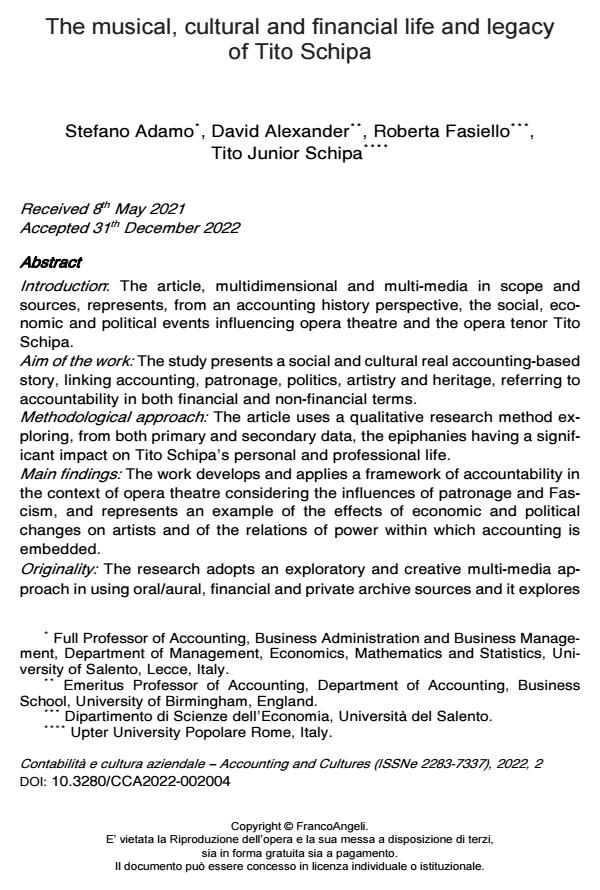The musical, cultural and financial life and legacy of Tito Schipa
Titolo Rivista CONTABILITÀ E CULTURA AZIENDALE
Autori/Curatori Stefano Adamo, David Alexander, Roberta Fasiello, Tito Junior Schipa
Anno di pubblicazione 2023 Fascicolo 2022/2
Lingua Inglese Numero pagine 37 P. 53-89 Dimensione file 180 KB
DOI 10.3280/CCA2022-002004
Il DOI è il codice a barre della proprietà intellettuale: per saperne di più
clicca qui
Qui sotto puoi vedere in anteprima la prima pagina di questo articolo.
Se questo articolo ti interessa, lo puoi acquistare (e scaricare in formato pdf) seguendo le facili indicazioni per acquistare il download credit. Acquista Download Credits per scaricare questo Articolo in formato PDF

FrancoAngeli è membro della Publishers International Linking Association, Inc (PILA)associazione indipendente e non profit per facilitare (attraverso i servizi tecnologici implementati da CrossRef.org) l’accesso degli studiosi ai contenuti digitali nelle pubblicazioni professionali e scientifiche
Introduction: The article, multidimensional and multi-media in scope and sources, represents, from an accounting history perspective, the social, economic and polit-ical events influencing opera theatre and the opera tenor Tito Schipa. Aim of the work: The study presents a social and cultural real accounting-based story, linking accounting, patronage, politics, artistry and heritage, referring to ac-countability in both financial and non-financial terms. Methodological approach: The article uses a qualitative research method explor-ing, from both primary and secondary data, the epiphanies having a significant im-pact on Tito Schipa’s personal and professional life. Main findings: The work develops and applies a framework of accountability in the context of opera theatre considering the influences of patronage and Fascism, and represents an example of the effects of economic and political changes on artists and of the relations of power within which accounting is embedded. Originality: The research adopts an exploratory and creative multi-media approach in using oral/aural, financial and private archive sources and it explores the Tito Schipa’s life and career, largely unknown, and the related ‘accounting’ information.
Parole chiave:music, patronage, accountability, decision-making, investments, opera
Stefano Adamo, David Alexander, Roberta Fasiello, Tito Junior Schipa, The musical, cultural and financial life and legacy of Tito Schipa in "CONTABILITÀ E CULTURA AZIENDALE" 2/2022, pp 53-89, DOI: 10.3280/CCA2022-002004